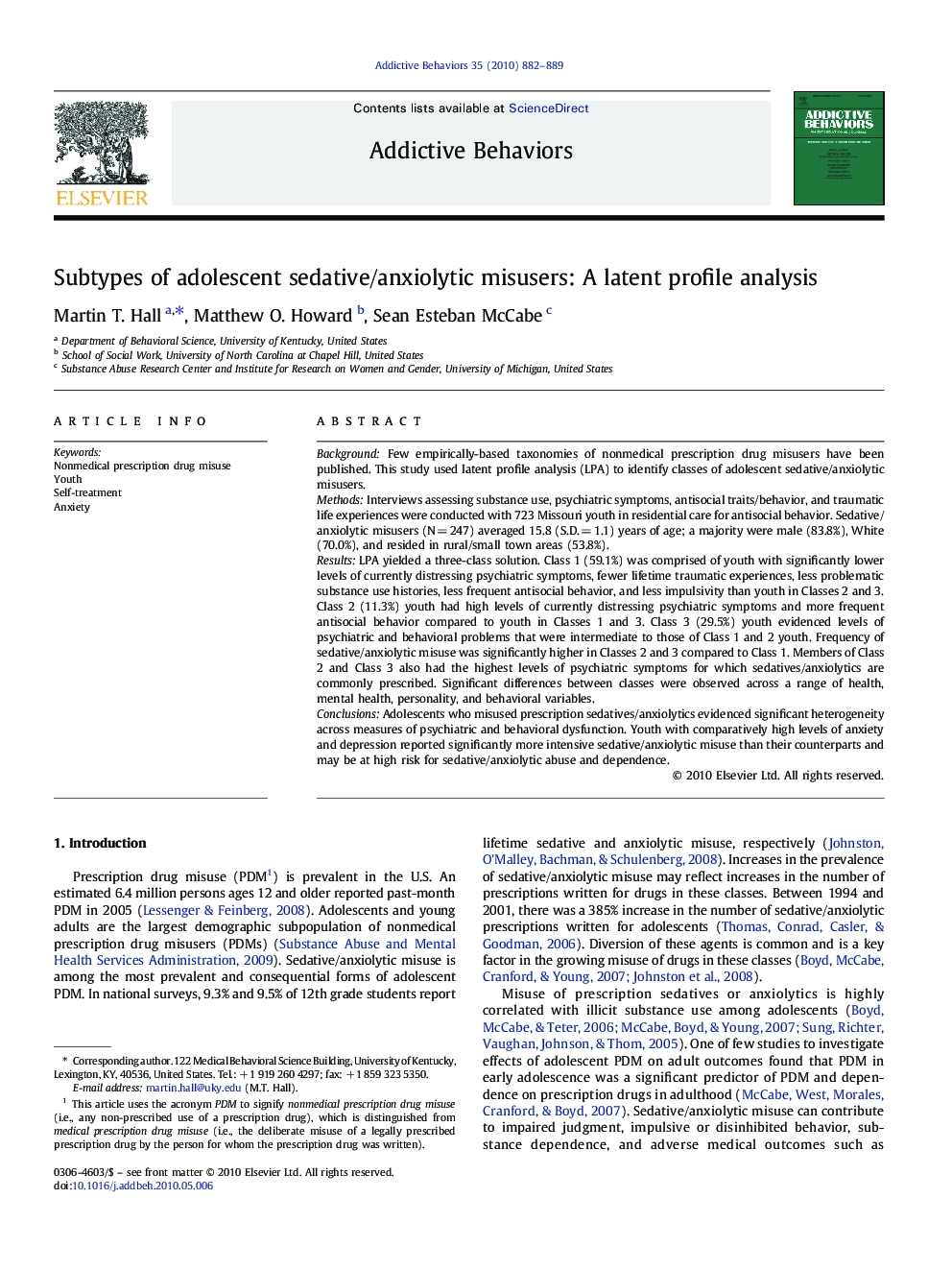| Article ID | Journal | Published Year | Pages | File Type |
|---|---|---|---|---|
| 899739 | Addictive Behaviors | 2010 | 8 Pages |
BackgroundFew empirically-based taxonomies of nonmedical prescription drug misusers have been published. This study used latent profile analysis (LPA) to identify classes of adolescent sedative/anxiolytic misusers.MethodsInterviews assessing substance use, psychiatric symptoms, antisocial traits/behavior, and traumatic life experiences were conducted with 723 Missouri youth in residential care for antisocial behavior. Sedative/anxiolytic misusers (N = 247) averaged 15.8 (S.D. = 1.1) years of age; a majority were male (83.8%), White (70.0%), and resided in rural/small town areas (53.8%).ResultsLPA yielded a three-class solution. Class 1 (59.1%) was comprised of youth with significantly lower levels of currently distressing psychiatric symptoms, fewer lifetime traumatic experiences, less problematic substance use histories, less frequent antisocial behavior, and less impulsivity than youth in Classes 2 and 3. Class 2 (11.3%) youth had high levels of currently distressing psychiatric symptoms and more frequent antisocial behavior compared to youth in Classes 1 and 3. Class 3 (29.5%) youth evidenced levels of psychiatric and behavioral problems that were intermediate to those of Class 1 and 2 youth. Frequency of sedative/anxiolytic misuse was significantly higher in Classes 2 and 3 compared to Class 1. Members of Class 2 and Class 3 also had the highest levels of psychiatric symptoms for which sedatives/anxiolytics are commonly prescribed. Significant differences between classes were observed across a range of health, mental health, personality, and behavioral variables.ConclusionsAdolescents who misused prescription sedatives/anxiolytics evidenced significant heterogeneity across measures of psychiatric and behavioral dysfunction. Youth with comparatively high levels of anxiety and depression reported significantly more intensive sedative/anxiolytic misuse than their counterparts and may be at high risk for sedative/anxiolytic abuse and dependence.
